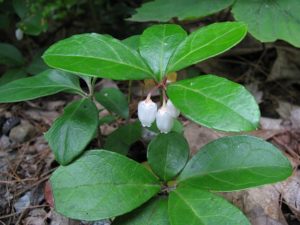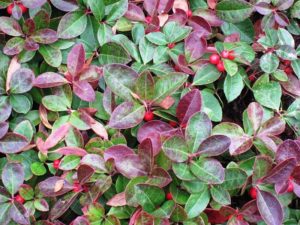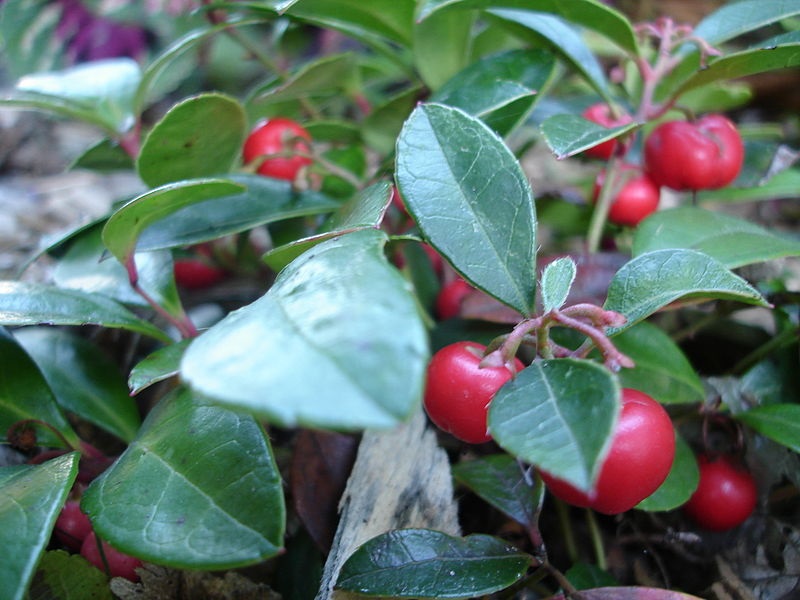
Wintergreen Flowers
Wintergreen (Gaultheria procumbens) is a perennial groundcover found in the forests of Northeastern North America. We most often associate the flavor with toothpaste, chewing gum and mouthwash. It was also an original ingredient of root beer.
The Native Americans made a tea from the leaves. They used the tea to treat headache, fever, sore throat, rheumatism and various other aches and pains. This was an effective remedy because the oil in the leaves contains methyl salicylate which is related to acetylsalicylic acid which we call aspirin.
You can harvest the leaves any time during the growing season (while they are still green) to make tea.
Wintergreen is hardy in growing zones 3 – 7. It grows best in semi-shade. It will grow in full shade, but won’t flower or develop as many berries. It also prefers acidic soil, pH 4.5 – 6.5. If you want to grow this, get a soil test done to see if you need to amend your soil to make it more acidic.

The leaves turn red in the fall.
The plants are evergreen, retaining their leaves during the winter. The leaves turn red in the colder weather. The flowers are white or pale pink and shaped like bells. Bloom time is July and August. The berries follow, ripening to red in late fall. The berries are edible by both humans and animals. They are an important food source during the winter for birds, deer and rodents such as squirrels, mice and chipmunks. Left on the plants, the berries last all winter, becoming desiccated by late winter.
Wintergreen is usually sold as plants. Do not dig them up from the wild. They are an endangered plant. Only use nursery stock. Plant them 12 to 16 inches apart. They will look sparse at first, but will gradually fill in.
Wintergreen is easy to propagate. As the stems creep across the ground, they develop roots along their length. You can simply snip off a piece of a stem that has roots, carefully dig up the root ball, including the soil it is growing in, and replant elsewhere. You can also take cuttings in the spring when the plants are actively growing. Dip your cutting in rooting hormone and plant it in a container. You will know that roots are growing when you see new leaves on your cutting. Plants without roots cannot grow new leaves.
Wintergreen can also be grown from seed. The seeds need to be cold stratified first. Cold stratification mimics the cold weather of winter which some plant seeds need to germinate. 12 weeks before your last frost, wrap your seeds in a damp paper towel or damp peat moss and place in a plastic bag. Put the plastic bag in your refrigerator for 4 weeks. Then remove it from your refrigerator and sow the treated seeds in a container 1/8 inch deep. Be patient. The seeds will be slow to germinate. It could take up to 2 to 3 months. You can plant your seedlings outdoors after your last frost when they have two sets of true leaves. Space them 12 to 16 inches apart.

